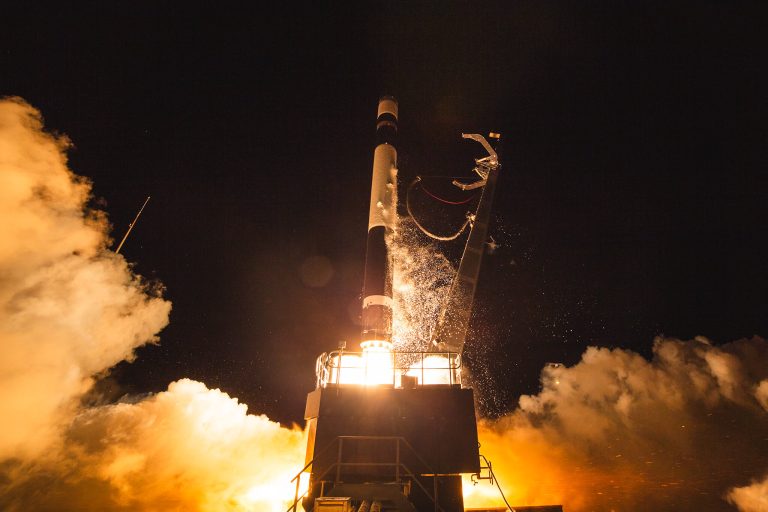WASHINGTON — Rocket Lab launched a set of satellites for HawkEye 360 June 26 in the first of back-to-back launches from its New Zealand launch site.
An Electron rocket lifted off from Launch Complex 1 on New Zealand’s Mahia Peninsula at 1:28 p.m. Eastern. The company declared mission success with the deployment of the four satellites on board nearly an hour later.
The Electron deployed three Cluster 12 satellites for HawkEye 360, joining the company’s fleet that collect radio-frequency intelligence data. Also on board was Kestrel-0A, a satellite to test technologies for future spacecraft.
The Cluster 12 satellites are the first HawkEye 360 satellites to operate in a dawn/dusk sun-synchronous orbit, which the company says will fill a gap in data collection. “By extending coverage through a new orbital plane, this launch reflects our continued leadership in innovation and strategic growth,” said Patrick Zeitouni, chief strategy officer at HawkEye 360, in a company statement.
The HawkEye 360 launch, dubbed “Get The Hawk Outta Here” by Rocket Lab, took place after the company reshuffled its launch schedule. The company had been working towards an Electron launch of another mission, called “Symphony In The Stars,” carrying a satellite for a confidential customer.
Rocket Lab scrubbed a June 20 launch attempt for that mission because of high winds at the launch site. The company rescheduled the launch for June 24, only to delay it again several hours before the scheduled liftoff “to allow time for additional checkouts.”
The company announced after that postponement that it would instead launch the HawkEye 360 satellites next. The “responsive reschedule” of the launches, as described by Rocket Lab, illustrated the “peak operational efficiency and flexibility” needed for the higher launch cadence sought by the company. The HawkEye 360 launch was the ninth Electron mission so far this year.
The “Symphony In The Stars” launch is now scheduled for June 28 at 2:45 a.m. Eastern. Rocket Lab has not identified the customer for the launch, saying only the Electron will place a single satellite into a 650-kilometer orbit.
Some have speculated that the customer could be EchoStar, based on an illustration of a satellite in the Rocket Lab mission patch that bears a resemblance to that company’s Lyra smallsat. EchoStar is planning a constellation of such smallsats, built by Astro Digital, to provide Internet of Things services. Two Lyra spacecraft have launched to date on SpaceX Transporter rideshare missions, including the Transporter-14 launch June 23.
If Rocket Lab does launch that mission June 28, it will be the shortest time between two launches from Launch Complex 1, although the company has done two Electron launches within 24 hours from separate launch sites in New Zealand and Virginia.
“With our next mission set to launch in less than 48 hours— the fastest we’ve ever scheduled back-to-back missions from the same launch site — I’m proud of the team for continuing to deliver the high-cadence, responsive launch that our customers rely on,” Peter Beck, chief executive of Rocket Lab, said in a statement after the HawkEye 360 launch.

